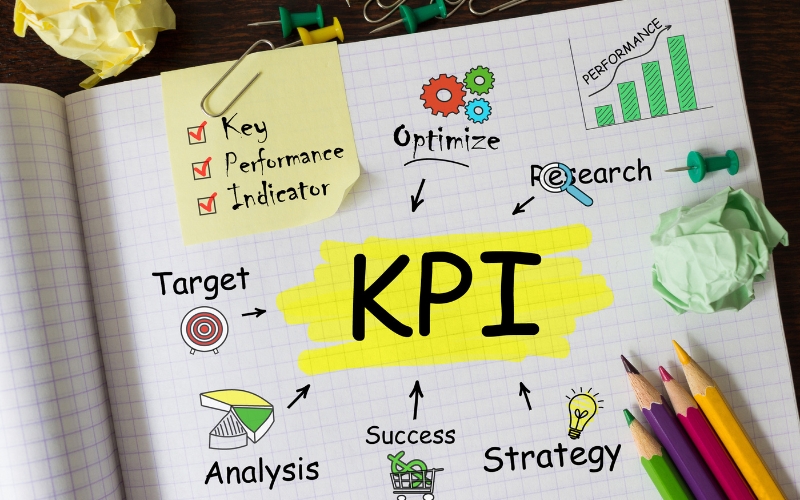
In today’s competitive digital landscape, having an effective SEO content strategy is crucial for achieving online visibility and driving organic traffic. Without a well-structured approach, your content may fail to reach its full potential. By understanding the basics of SEO and aligning your content strategy with both search engine requirements and audience needs, you can significantly enhance your website’s performance. This article will guide you through the essential components of an SEO content strategy, from keyword research to optimization and performance tracking, helping you create content that not only ranks but also engages your audience.
Understanding the Basics of SEO and Content Strategy

An effective SEO content strategy is crucial for any website looking to enhance its online visibility and drive organic traffic. In today’s digital landscape, simply producing content isn’t enough. Without an SEO content strategy, your content may not reach its full potential. To drive meaningful traffic and generate leads, it’s essential to ensure that your content is strategically optimized for search engines and caters to the needs of your audience.
SEO, or Search Engine Optimization, refers to the practice of optimizing your website and content to rank higher on search engine result pages (SERPs). This involves understanding how search engines like Google evaluate and rank content. The more optimized your content is, the better it will perform in search rankings, leading to increased visibility, traffic, and ultimately, conversions. The core of an SEO content strategy is creating content that answers the questions and needs of your audience while adhering to best practices that search engines reward.
To build a successful SEO content strategy, it’s important to focus on several key components of SEO:
- Keywords: The foundation of any content strategy is understanding the terms and phrases your target audience is searching for. Keyword research helps you identify these terms and optimize your content accordingly. By strategically placing keywords throughout your content—without overstuffing—you can improve your chances of ranking higher in search results.
- On-page Optimization: This refers to the elements of a webpage that you can directly control, such as headers, meta tags, URLs, and content structure. On-page SEO plays a significant role in helping search engines understand the relevance and context of your content. A well-optimized page will include targeted keywords in headings, subheadings, and throughout the body text while maintaining readability and user experience.
- Technical SEO: This aspect of SEO ensures that search engines can crawl and index your site effectively. It involves optimizing site speed, mobile-friendliness, URL structure, and ensuring that there are no technical barriers preventing search engines from accessing your content. A technically optimized website enhances user experience, which is a critical factor in ranking well on search engines.
A well-crafted SEO content strategy brings all these elements together, ensuring that your content is optimized, engaging, and relevant to both users and search engines. By prioritizing keyword research, on-page optimization, and technical SEO, you can create content that ranks well and drives organic traffic to your website.
Defining Clear Goals and KPIs for Your Content Strategy

Creating an SEO content strategy is just the first step toward improving your website’s visibility. To ensure that your efforts result in meaningful outcomes, it’s crucial to define clear goals and identify the key performance indicators (KPIs) that will allow you to track the success of your strategy. These measurable objectives will help you assess the effectiveness of your content and adjust your strategy accordingly.
The primary goal of an SEO content strategy is often to increase organic traffic, but it’s important to break this down into more specific and actionable goals. These can include driving targeted traffic to specific pages, increasing conversions, or improving search engine rankings for targeted keywords. By setting clear goals, you can ensure that your content not only attracts visitors but also serves a purpose in the larger context of your business objectives.
To set goals for your SEO content strategy, it’s essential to align your content objectives with the overall business goals. For instance, if your business aims to increase product sales, your content strategy might focus on driving traffic to product pages or writing detailed product guides that convert visitors into customers. If your goal is brand awareness, you might focus on creating high-quality blog posts, infographics, or educational content to engage a broader audience.
Once you have your content goals defined, the next step is identifying KPIs to measure progress. Key performance indicators provide data to track the success of your content efforts. Common KPIs for an SEO content strategy include:
- Organic Traffic: Tracking the number of visitors coming to your site from organic search results is one of the primary KPIs. You can monitor this through Google Analytics or other analytics platforms to see how well your content ranks for relevant keywords.
- Search Rankings: Monitoring your content’s position in search engine results for targeted keywords is another crucial KPI. An improvement in rankings indicates that your SEO efforts are working, which is a direct reflection of your SEO content strategy’s success.
- Conversion Rate: Ultimately, an SEO content strategy should not only bring in traffic but also convert that traffic into leads, sales, or other desired actions. Monitoring your conversion rate allows you to see how well your content persuades users to take action.
By defining clear goals and KPIs for your SEO content strategy, you ensure that your content creation efforts align with your business objectives. Regularly measuring these KPIs helps you refine your strategy over time, ensuring you continue to drive results that matter.
Conducting Keyword Research to Fuel Your Content Creation

One of the most crucial elements of a successful SEO content strategy is conducting thorough keyword research. This research helps you identify the terms and phrases your target audience is searching for and informs your content decisions. By focusing on the right keywords, you ensure that your content is optimized to meet the needs of both search engines and users, driving organic traffic to your website.
Keyword research is the foundation of an effective SEO content strategy because it helps you understand what your audience is looking for, their search intent, and the competition for specific terms. By identifying the right keywords, you can create content that directly addresses user needs, increasing the likelihood of ranking higher in search engine results.
Using the right tools for keyword research is essential for uncovering valuable keywords. Tools like Google Keyword Planner, SEMrush, and Ahrefs can provide insights into the search volume, competition level, and keyword difficulty. Here’s how these tools can help fuel your SEO content strategy:
- Google Keyword Planner: This tool is a great starting point for keyword research. It provides data on search volume, competition, and trends for specific keywords. It also suggests related keywords and long-tail phrases that might be less competitive but highly relevant to your target audience. Integrating these long-tail keywords into your content strategy helps you attract more qualified traffic.
- SEMrush: SEMrush is a comprehensive SEO tool that offers advanced keyword research features. It allows you to analyze competitor keywords, track keyword rankings, and discover high-value keywords in your niche. SEMrush is also valuable for uncovering keyword gaps—areas where your competitors may be ranking well, but you haven’t yet targeted with your content.
- Ahrefs: Ahrefs is known for its detailed backlink analysis, but its keyword research features are also incredibly powerful. With Ahrefs, you can see the keyword difficulty, search volume, and click-through rates for specific keywords. It also provides keyword ideas based on content that ranks well, helping you discover opportunities to create content that resonates with your audience.
By integrating insights from these tools into your SEO content strategy, you can ensure that your content creation is driven by data and designed to rank for keywords that will bring targeted traffic to your website. Targeting a mix of short-tail and long-tail keywords can further optimize your content for both search engines and users, driving better results over time.
Creating High-Quality, Engaging Content for Your Audience

When developing an SEO content strategy, one of the most important aspects is crafting high-quality, engaging content that speaks directly to the needs and interests of your target audience. It’s not enough to simply optimize for search engines; content must also be valuable, informative, and user-friendly to ensure long-term success. By focusing on creating content that resonates with users, you can enhance both user engagement and SEO performance.
The primary goal of any SEO content strategy should be to deliver content that provides real value to readers. This can be achieved by addressing common pain points, answering questions, and providing solutions that meet the needs of your audience. Content that is relevant and informative builds trust with readers, encouraging them to return to your site for future content. Moreover, valuable content leads to longer on-site engagement, higher bounce rates, and increased social sharing—all of which are factors that positively influence your site’s SEO performance.
Originality and thorough research play significant roles in the quality of content. For a content piece to truly stand out, it must provide unique insights that cannot be found elsewhere. A well-researched article backed by credible sources not only engages users but also signals to search engines that your content is authoritative and worth ranking. Including original perspectives, expert opinions, or data-driven insights helps distinguish your content from the competition and can contribute to higher rankings on search engine result pages (SERPs).
A key component of an SEO content strategy is ensuring that content is well-structured and easy to read. Breaking content into digestible sections with clear headings, bullet points, and visuals makes it more accessible to users. Additionally, using proper formatting ensures that search engines can easily crawl and index your content. Including relevant keywords naturally within your content, such as in headers, subheaders, and throughout the body text, also helps search engines understand the topic of your page and rank it for relevant searches.
Moreover, creating content that fosters engagement—such as adding compelling calls-to-action (CTAs) or encouraging comments and social sharing—can help build a loyal audience. Engaging with your readers encourages further interaction, helping you build a relationship with them, which ultimately strengthens your SEO content strategy. When your audience spends more time on your site, shares your content, or interacts with it, search engines recognize the value of your content and reward it with higher rankings.
By consistently producing high-quality, original, and user-centric content, you enhance the chances of your SEO content strategy driving traffic, improving engagement, and achieving lasting SEO success.
Optimizing Content for SEO and Measuring Results

A successful SEO content strategy goes beyond creating high-quality content; it involves optimizing that content so it ranks well in search engine results. Optimization ensures that search engines can crawl and understand your content, improving visibility and driving more organic traffic. In this section, we’ll walk through the essential on-page SEO best practices for optimizing content and how to measure and improve your results.
On-Page SEO Best Practices
- Use of Headers and Subheaders: One of the first steps in optimizing content is properly using headers (H1, H2, H3, etc.). Search engines use these headers to understand the structure and key topics of your content. The main heading, typically the H1 tag, should include your target keyword, while H2s and H3s can incorporate secondary keywords. This practice not only helps with SEO but also makes your content easier for readers to navigate.
- Meta Tags and Meta Descriptions: Meta tags, including the title tag and meta description, play a crucial role in on-page SEO. The title tag should accurately reflect the content and include primary keywords, as it directly impacts search engine rankings and click-through rates. Meta descriptions, while not a direct ranking factor, influence user engagement by summarizing the page’s content and enticing users to click.
- Internal Linking: Internal linking is another powerful tool in an SEO content strategy. By linking to other relevant pages on your site, you help search engines understand the relationship between pages and pass link equity, which can improve rankings. Internal links also help guide users to additional valuable content, enhancing the overall user experience.
- Image Optimization: Including relevant images in your content is important, but they must be optimized for both speed and SEO. Use descriptive file names and alt text that include target keywords. Optimizing images helps improve page load speed, which is an important ranking factor, and makes your content more accessible to a wider audience.
Measuring Results and Iterating Your Strategy
Once your content is optimized, the next step is to track its performance and adjust your SEO content strategy based on data. Tools like Google Analytics and Google Search Console are invaluable for monitoring content effectiveness.
- Google Analytics: This tool tracks website traffic, user behavior, and engagement metrics like bounce rates, average session duration, and pages per session. By analyzing these metrics, you can determine which content is driving the most traffic and where you may need to improve or optimize further.
- Google Search Console: Search Console provides insights into how your content ranks in search engines. It shows which keywords your pages are ranking for, their average position, and click-through rates (CTR). If certain pages are performing well, you can double down on similar content, while underperforming pages can be revised for better optimization.
By regularly reviewing performance data and adjusting your SEO content strategy, you ensure continuous improvement. If specific content isn’t ranking as expected, revisiting keyword optimization, refreshing outdated content, or adding more relevant internal links can often lead to better results.
Ultimately, optimizing your content and measuring its effectiveness are ongoing processes. By following on-page SEO best practices and using performance data to refine your strategy, your SEO content strategy will yield consistent and meaningful results over time.
Conclusion
To further enhance your SEO content strategy, it’s essential to stay updated with the latest SEO trends and best practices. A great resource for ongoing SEO education is Moz’s Beginner’s Guide to SEO. This comprehensive guide offers valuable insights into the fundamentals of SEO, from keyword research to on-page optimization, and is an excellent starting point for anyone looking to improve their SEO efforts. Staying informed and continuously learning will help ensure that your content remains relevant and competitive in the ever-evolving digital landscape.
To sum up, building a successful SEO content strategy is a multi-faceted process that involves thorough planning, consistent optimization, and ongoing analysis. By defining clear goals, conducting in-depth keyword research, and implementing on-page SEO best practices, you can ensure that your content drives meaningful results. Additionally, regularly measuring your content’s performance allows you to refine and adjust your strategy for continuous improvement. When executed correctly, an SEO content strategy can significantly boost your online presence, attract more traffic, and ultimately contribute to your business’s success.
For more details or to discuss your specific SEO requirements, visit our Onsite SEO Services page.

